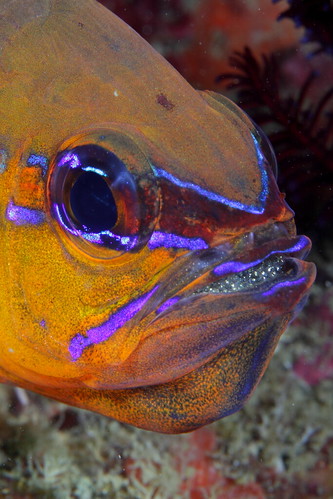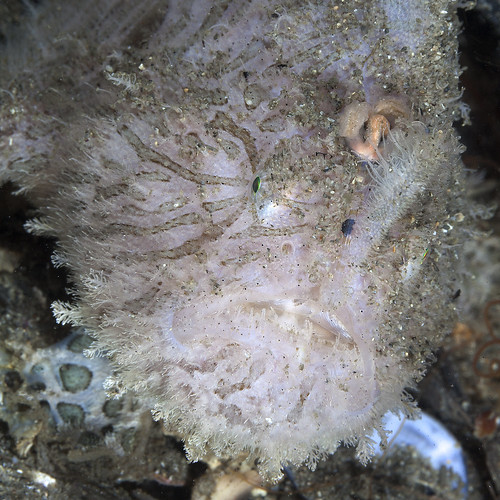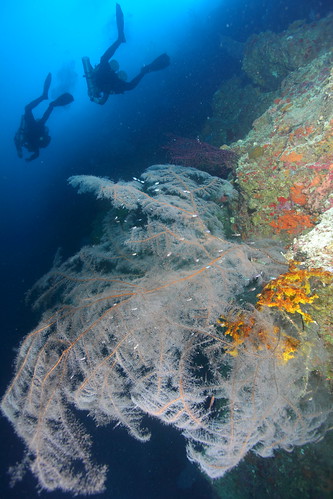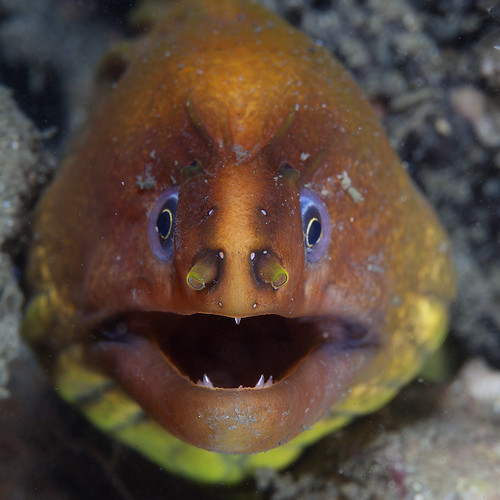Fining for Fotography
(Or: Phining phor Photography)
I’ve said it before and I’ll say it again: The base of all underwater photography is proper buoyancy and good fining. If you make a mess of the visibility by kicking up tons of silt, and can’t stay still in front of your photo subject, you won’t get a quality image, no matter how wicked your camera is.
Let’s look at these different non-camera skills we should have when trying to take pictures underwater:

Hovering: Everyone who ever took a photograph knows: it’s usually a good idea to keep still while you’re pressing down the shutter. This is true on land, and naturally also under water. Now, we could simply lie down on the ground and start snapping, but this is not a good idea in a couple of situations: when the sediment is particularly fine, you will end up in a sand-cloud not conductive to photography. If you are in a region with corals covering the ground, you don’t want to destroy them by putting all of your weight on their fragile little branches. And if you are diving along a wall there might not even be a ground to rest on. So, maintaining absolutely neutral buoyancy is the way to go: make sure you don’t carry too much lead and distribute the weight you have on your gear in a manner which makes all your body parts sink equally (“A man yells from the water: ‘I sink’. A German guy walks by and asks him: ‘What are you sinking about?’ – that one always comes to my mind when I hear the verb ‘sink’). A block of weight in a strategic position high up on your tank or in a trim pocket of your BC can work wonders. Furthermore, relax and breathe shallow. Deep in- and exhalations will move you up and down through the water on every breath cycle.

Frog kick: typically divers first learn to fin in a style resembling the leg motion in a freestyle swimming stroke, alternatingly raising and lowering outstretched legs. This works well in most situations, and creates quite a bit of forward thrust. It’s not ideal, however, when trying to maneuver very precisely for underwater photography. In this case, it’s much better to use the frog kick: keep your thighs in a stable, horizontal position, and rotate your calves outward. This will propagate you forward in a much more controlled manner, and stir up noticeably less bottom sediment. Especially in some of the murkier (but seriously biodiverse) Sydney dive sites, this can make a big difference! In a variant of the frog kick, you only rotate your feet at the ankles, and cause even less sediment perturbance. You won’t move forward very fast, but this fining style will allow you some highly controlled maneuvering.

Rotation: When swimming with the frog-kick style, you can also turn much more easily. Just do the frog-kick motion with one leg only, and you will rotate in the other direction. That’s a very useful technique for getting yourself into just the right position relative to your macro subject – an indispensable skill when shooting all the minuscule shrimps, gobies and blennies which populate the crevices of a coral reef.
Note: Pursuit is ridiculous! You look like an underwater ass when trying to catch up with a fish trying to get away from you. In most cases, it won’t even work. Trying to catch a wrasse? You’d better be Ian Thorpe II, on a good day. Now, if it’s a slow-swimming fish like a puffer, you could maybe beat him in a race, but it’s still not conductive to taking a quality shot of the fish: you will photograph from an unstable, not particularly controlled position and will not be able to concentrate on proper framing and composition. Also, you will, at best, get a shot of a panicky fish, and not one of an animal showing its natural behavior.
More tips for underwater photography (my 10-part series on starting out in the art) are here. And if you would like to see me in action with my camera, and join me for some underwater shooting at a seriously top dive spot, come to the Evolution Photoganza in the Philippines in September!
